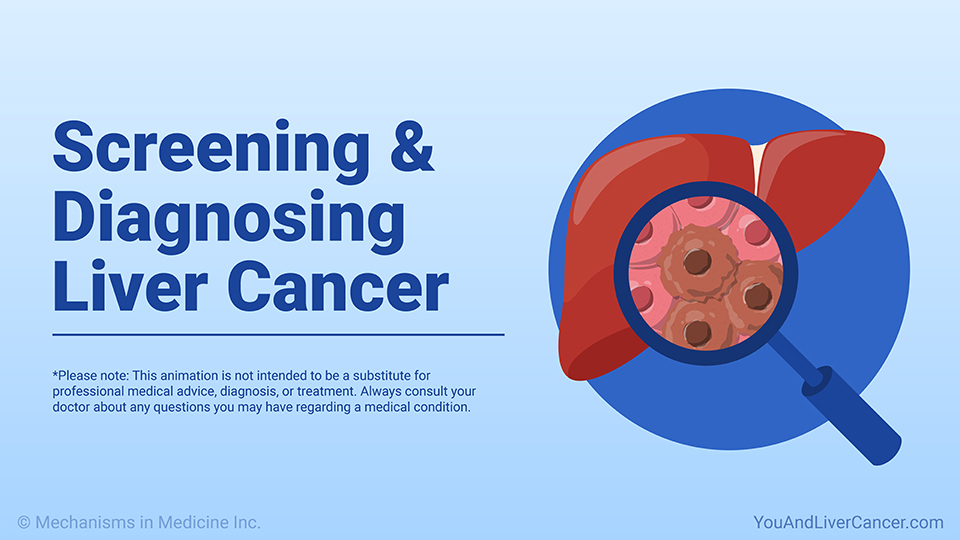Understanding Liver Cancer Surgery and Liver Transplant
*Please note: This slide show is not intended to be a substitute for professional medical advice, diagnosis, or treatment. Always consult your doctor about any questions you may have regarding a medical condition.
Introduction to surgery and transplant for liver cancer
Surgical options for liver cancer treatment include liver resection and liver transplant.
These treatments may offer the best chance of a cure when used for the right patients at the right time.
Decisions about surgical treatment for liver cancer
The right treatment for liver cancer is different for everyone. It depends on the tumor's size and location, whether there are multiple tumors, your overall health, and how well your liver is currently working.1
Your surgery or transplant treatment team
Your treatment will probably involve multiple specialists. These may include a liver specialist, or hepatologist; a cancer specialist, called a medical oncologist; a surgeon; an interventional radiologist, a radiation oncologist; members of a liver transplant team, and more.
When is surgery an option?
Surgery may be an option for liver cancer if it is found early and has not spread outside the liver.
About liver resection
Liver resection involves removing the portion of the liver containing the tumor and a small amount, or margin, of healthy tissue around it.
About liver resection
There is enough liver remaining after resection to keep working normally.2 The liver is also one of the few organs in the body that can regenerate (grow back in size) over time.
Types of liver resection surgery
The two approaches to liver resection are traditional open surgery, which uses a single large incision in your abdomen, and minimally invasive laparoscopic surgery, which uses several small incisions and tiny instruments with cameras.
Both approaches are used worldwide.
Laparoscopic surgery typically leads to a faster recovery.
Who is a candidate for liver resection?
Liver resection may be an option if your liver is functioning well, the disease is in an early stage, the tumors are small, and the cancer has not invaded major blood vessels.
Your overall health must be good enough for you to safely undergo major surgery.3
What is a liver transplant for liver cancer?
A liver transplant is an operation to remove your entire liver and replace it with a healthy one from a donor.
A transplant removes all tumors if they are confined to the liver. This means it can potentially cure the cancer.3
Who is a candidate for liver transplant?
Only a small percentage of people with liver cancer qualify for a transplant. You may be a candidate if your cancer is only in the liver, the tumors meet specific criteria for size and numbers, and you meet the health requirements for transplant.3,4
If you are interested in a transplant, it is best to be evaluated at a medical center that specializes in transplants.
Waiting for a liver transplant
If you are deemed eligible, you will be placed on a waiting list for a donated liver.
During this time, you may receive "bridging" treatments to prevent your cancer from growing or spreading. These might include ablation, embolization, or other therapies.
Where do donor livers come from?
Most liver transplants use organs from deceased donors. In some cases, a living donor may donate part of their liver.
Where do donor livers come from?
Since the liver can regenerate, or grow back, both the donor's and recipient's livers grow to normal size after a successful transplant.
Surgical centers and second opinions on liver cancer surgery and transplant
Liver cancer surgery is complex and requires the expertise of a specialist. It’s recommended to seek treatment at a cancer center that performs many liver surgeries and offers transplant options.
Don’t hesitate to get second or even third opinions before deciding on a treatment approach.
Your care after liver cancer surgery or transplant
After liver resection or a liver transplant, you will need to see your healthcare team often and make sure to follow all their instructions. Your regular checkups will include monitoring for any signs of cancer recurrence and tracking your overall liver function.
With a transplant, you'll need to take medications to keep your body from rejecting the donor liver.
What if liver cancer returns after surgery or a transplant?
Unfortunately, liver cancer can sometimes recur after surgery or transplant. If this happens, additional treatment options may include ablation, embolization, targeted therapy, immunotherapy, radiation, or taking part in clinical trials of new liver cancer treatments.6
Clinical trials for liver cancer transplant
Clinical trials are research studies that test new treatments and new ways to screen for and diagnose disease. Liver cancer trials may include surgery and transplant trials.
Clinical trials for liver cancer transplant
Ask your doctor about clinical trial options as early as possible after learning you have liver cancer. Trials give you access to the latest treatments that are not yet available to the public. You are also helping researchers develop better options for people with liver cancer in the future.
References
- National Cancer Institute. Primary liver cancer treatment (PDQ) – Health professional version. Last revised: May 9, 2024.
https://www.cancer.gov/types/liver/hp/adult-liver-treatment-pdq#top
- National Cancer Institute. Liver cancer treatment. Last revised: May 15, 2024.
https://www.cancer.gov/types/liver/what-is-liver-cancer/treatment
- Asafo-Agyei K, Samant, H. Hepatocellular carcinoma. StatPearls. Last revised: June 12, 2023.
https://www.ncbi.nlm.nih.gov/books/NBK559177
- Garikipati SC, Roy P. Biliary tract cholangiocarcinoma. StatPearls. Last revised: May 6, 2024.
https://www.ncbi.nlm.nih.gov/books/NBK560708
- Benkö T, König J, Theysohn JM, Schotten C, Saner FH, Treckmann J, Radunz S. Bridging treatment prior to liver transplantation for hepatocellular carcinoma: radioembolization or transarterial chemoembolization? Eur J Med Res. 2022 May 26;27(1):74.
- American Cancer Society. Treatment of liver cancer, by stage. Last revised: February 11, 2025.
https://www.cancer.org/cancer/types/liver-cancer/treating/by-stage.html
This slide show provides an overview of
liver cancer surgery and
liver transplant. Surgical options for liver cancer treatment include
liver resection and
liver transplant. These treatments may offer the best chance of a cure when used for the right patients at the right time. The right treatment for liver cancer is different for everyone. It depends on the tumor's size and location, whether there are multiple tumors, your overall health, and how well your liver is currently working. Click through to learn about types of liver resection (
traditional open surgery and
minimally invasive laparoscopic surgery), how
liver transplant works, who is eligible for these procedures, and care after surgery or transplant.
-
Share with family and friends:
Click here to take our SURVEY
Your feedback is important to us! We will use your feedback to develop future areas of content about liver cancer which will help other patients, caregivers, and families.

































